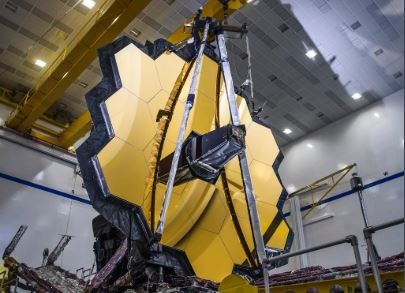Despite the coronavirus pandemic, NASA is still creating technologies to be deployed to outer space, which will help us discover new things and solve the lurking mysteries outside our planet. NASA's newest telescope, James Webb Space Telescope (Webb), was deployed on the recently conducted test. The device was deployed the same way it will be configured when it ventures the outer space, and tested in March for further preparation, before it will be delivered to French Guiana, in South America, for launching.
With its size, is it possible for NASA to launch this enormous telescope to outer space? How big is Webb Telescope? Let's find out.

NASA Deployed New Space Telescope (Webb)
NASA conducted a test that deployed the 10 billion dollar telescope, primarily its mirrors, into the same configuration once it's launched outside the earth. The conducted test involved setting the spacecraft's internal system to latch and fully extend the telescope's primary mirror, which has a dimension of 21-feet and 4-inches. The test-practice was conducted at Northrop Grumman Innovation Systems, located in Redondo Beach, California. During the experiment, special gravity offsetting was also tested on Webb's mirror to simulate the zero-gravity environment the telescope will be venturing. These tests will help ensure the safety of the mission by demonstrating, physically, how the spacecraft can operate once it is in outer space.
Will there be a problem launching this Gigantic Telescope?
The sensitivity of the telescope on how detailed it can see an object depends on how big the mirror will be. The larger the mirror, the more light it can gather from the object being observed, which will result in a very high-quality image. According to the James Webb Space Telescope website, it is currently the largest observatory that NASA has created.
In order for NASA to perform groundbreaking space exploration, the telescope's mirrors need to be so big. Webb's primary mirror is so large that it cannot be carried by any rocket available when it is fully extended. NASA is currently fixing this problem by applying the art of origami in Webb's movable parts. Employing applied material science, they were able to create this specially designed telescope, which can fold itself into a compact formation, which is smaller compared to the fully deployed form of the observatory. With this system, the telescope can now fit within a 16-feet (5 meters) payload fairing.
"Deploying both wings of the telescope while part of the fully assembled observatory is another significant milestone showing Webb will deploy properly in space. This is a great achievement and an inspiring image for the entire team," Lee Feinberg said (Webb's optical telescope element manager t NASA's Goddard Space Flight Center).
The actual deployment will progress next year once NASA confirms there will be no issue with Webb once launched. With Webb having these massive mirrors, will it be possible for it to liftoff? Or will this be the answer that will solve the mysteries of the universe?
Also Read: Launching! NASA Will Investigate Effects of Sun's Radiation. Find Out Why.
ⓒ 2025 TECHTIMES.com All rights reserved. Do not reproduce without permission.




